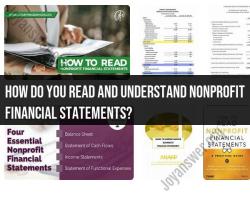How to choose a low-interest credit card?
Choosing a low-interest credit card involves considering various factors to ensure that the card aligns with your financial needs and goals. Here are some key factors and considerations to help you choose a low-interest credit card:
Interest Rate (APR):
- Look for credit cards with low Annual Percentage Rates (APR). The APR is the interest rate charged on balances carried over from month to month. Cards with lower APRs can save you money on interest charges.
Introductory APR Offers:
- Some credit cards offer introductory periods with 0% or low APRs for balance transfers or new purchases. Consider the duration of the introductory period and the regular APR that will apply afterward.
Credit Score Requirements:
- Understand the credit score requirements for the card. Low-interest cards may have better terms for individuals with higher credit scores. Check your credit score to determine which cards you are eligible for.
Annual Fees:
- Consider whether the card has an annual fee. While low-interest cards may save you money on interest, it's essential to factor in any annual fees that could offset those savings.
Credit Limit:
- Check the credit limit offered by the card. Ensure that it meets your spending needs without pushing you too close to the limit, as this can impact your credit score.
Penalty APR:
- Be aware of penalty APRs, which may be applied if you miss payments. Understand the conditions under which the penalty APR can be triggered and how it affects your interest rate.
Rewards and Benefits:
- While the primary focus is on the interest rate, consider any rewards or benefits the card may offer. Some low-interest cards also provide cash back, travel rewards, or other perks.
Terms and Conditions:
- Read the terms and conditions carefully. Pay attention to any fees, grace periods, and other terms that may impact your overall experience with the card.
Customer Service:
- Consider the quality of customer service provided by the credit card issuer. Reliable customer support can be crucial in case you have questions or encounter issues with your account.
Financial Goals:
- Align your choice with your financial goals. If you plan to carry a balance, prioritize the interest rate. If you intend to pay the balance in full each month, other features like rewards and benefits may become more important.
Before applying for a credit card, it's advisable to compare different options and read reviews. Additionally, assess your own spending habits and financial situation to choose a card that best fits your needs and preferences.
What factors should be considered when selecting a low-interest credit card?
Selecting a low-interest credit card requires careful consideration as it impacts your finances significantly. Here are key factors to ponder:
Interest Rates:
- Annual Percentage Rate (APR): This is the crucial factor, representing the yearly cost of borrowing on the card if you carry a balance. Aim for a card with an APR lower than the national average (~20.92% currently).
- Introductory APRs: Some cards offer temporary low introductory APRs for purchases or balance transfers. Compare the duration and rate with the regular APR to determine if it's a beneficial temporary offer.
- Penalty APR: Be aware of potential penalty APRs triggered by missed payments or exceeding credit limits. These are often significantly higher than regular APRs, so responsible card use is key.
Fees:
- Annual fees: Some cards charge yearly fees, sometimes waived for the first year. Weigh the benefits and rewards against the annual fee to determine if it's worthwhile.
- Transaction fees: Consider fees for foreign transactions, cash advances, or balance transfers. Choose a card with minimal fees that align with your typical spending habits.
Rewards and benefits:
- Rewards programs: Choose a card with rewards aligned with your spending patterns. Popular options include cash back, travel points, airline miles, or store rewards. Compare earning rates and redemption options to maximize value.
- Additional benefits: Some cards offer perks like travel insurance, purchase protection, extended warranties, or airport lounge access. Evaluate which benefits add value to your lifestyle.
Credit Score Requirements:
- Minimum credit score: Ensure you meet the minimum credit score required for the card you're considering. Applying for cards with unattainable scores can harm your credit.
- Impact on credit score: Applying for multiple cards in a short period can negatively affect your credit score. Be strategic in your applications.
Other factors:
- Credit limit: Choose a credit limit suitable for your needs and responsible spending habits.
- Customer service: Consider the card issuer's reputation for customer service and ease of dispute resolution.
Remember, the best low-interest credit card depends on your individual financial situation and spending habits. Research thoroughly, compare options, and prioritize cards with low APRs, minimal fees, and relevant rewards or benefits, all while ensuring you can maintain responsible credit card usage.
Feel free to ask if you have any further questions or need help comparing specific cards!











